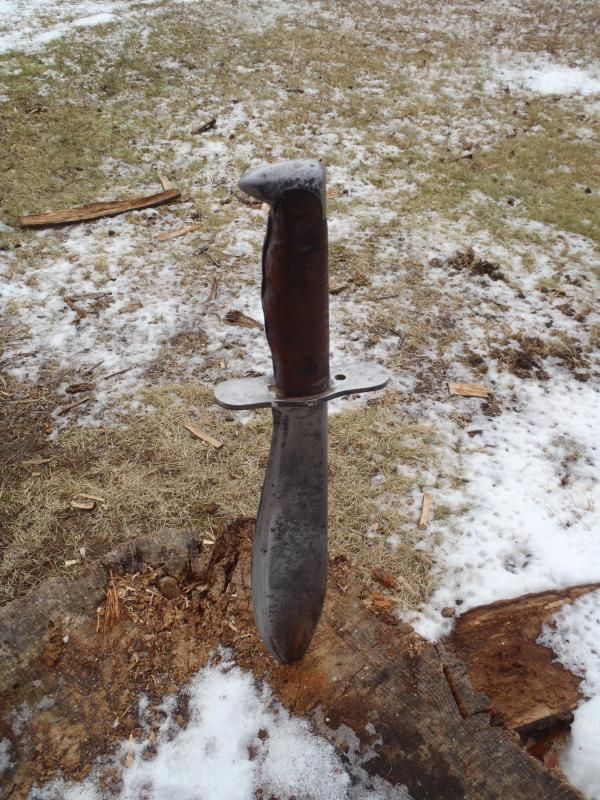Always nice to hear from you Hoop!
Perhaps I can amplify what I was saying in #44 and answer some of your comments as well.
I've been impressed how very many people, at least click on what we've written in these threads. I might think that I'm just having a chat with my hand full of friends here but a whole bunch more are looking at what is said. I find it just a little frightening what use someone might make of a hasty word.
The world has changed from when I was a pup, the people in it as well. From my view point, I'm surprised how many are strangers to the basic tools that were used nearly daily in the 1940 - 1950's. On a social level, in my opinion, it seems that the idea of personal responsibilities and consequences has really fallen out of favor. All this might make for an interesting discussion but it has an immediate implication if that person is going into the woods.
Your remark about "One always the bears the consequences of one's own decisions, doesn't one?" For you or me that's an "Of course!" but for many that can be a dawning reality.
About that part concerning "practicing at home". When people are strangers to tools and techniques they tend to make mistakes, break things and hurt themselves. I congratulate you on your good fortune in having the amount of support and instruction learning to use tools and all that you did. I doubt if that would be true for many, now a days.
If for example, a saw proves defective or is broken it easily can be replaced from home. A serious cut can be taken to the emergency room for stitches and kept clean with frequent bandage changes easily from home. That degree of care is nearly impossible while camping. Even in the 21th century the danger from infection is as real as it was in times past. And how many days was it back to the take out?
You say "Comes a time you have to take off the training wheels and ride". Quite simply, no you don't. All learning comes in steps, there is no reason to make it a difficult, stress ridden or dangerous experience. Learn at (or near) home in a situation free from the need to produce results immediately, as you would in camping. It could well happen that your first time doing something will be a mess, not to worry, pack it up and go home and think about it. With out pressure, it's probable that where things went wrong will become evident much sooner. There will come a time when you've got the drill down pat, then you're ready for the woods.
About the first-aid kit. I've got one, but let's be realistic, when we're out camping for some days duration, first-aid blends into longer term medical treatment for what ever the problem and the kit is, in all actuality, a gesture in the right direction. Few of us can pack along an E.R. and staff for proper care. I sincerely believe that prevention of accidents beats the best of medical care all hollow.
Now "Good Intentions and wishful thinking"....
Should I decide to learn the piano, I go to the music store and buy a set of forty books "Basic Piano for Dunderheads". As I walk out onto the sidewalk, what I'm holding is "good intentions and wishful thinking". If I ever hope to tap out a tune I must actually practice with a piano. Now, perhaps, try as I might, I find that the Dunderhead set just doesn't work for me and what I needed was the "Dumb as a Stump" set.
That doesn't mean that the author of the Dunderhead set was a dirty rotten rat, it just means that for me it didn't work and I chose not to use it.
As you continue to age Hoop, and I sincerely hope you do, you will find not everyone will be as enamored with some prized bit of advice of yours as you are. It's happened to all of us or will shortly. It's not the end of the world, in fact it's pretty much the way of the world: The older (and we would like to think, wiser) desperately want to lecture and the intended recipients are pretty sure they know better. It happens everywhere, but life goes on.
You say "I did not see any intent to mislead anyone with wishful thinking or false experience". I'm glad, I didn't either. But if in the future we find evidence of such scallywaggery we can join hands and together jump on it!
Best Wishes, Rob

